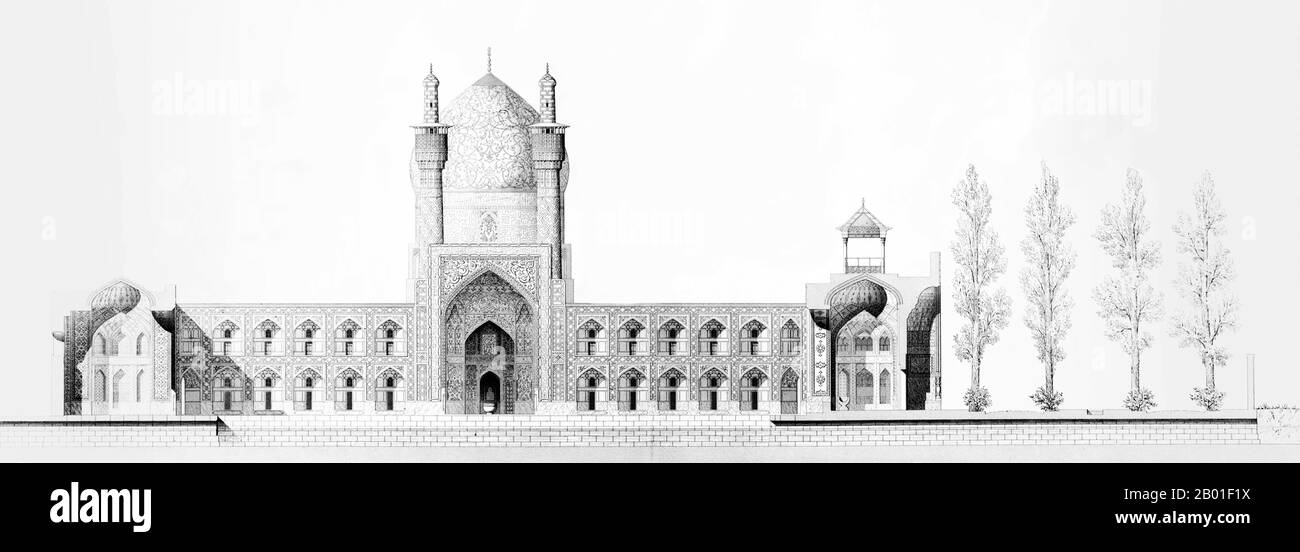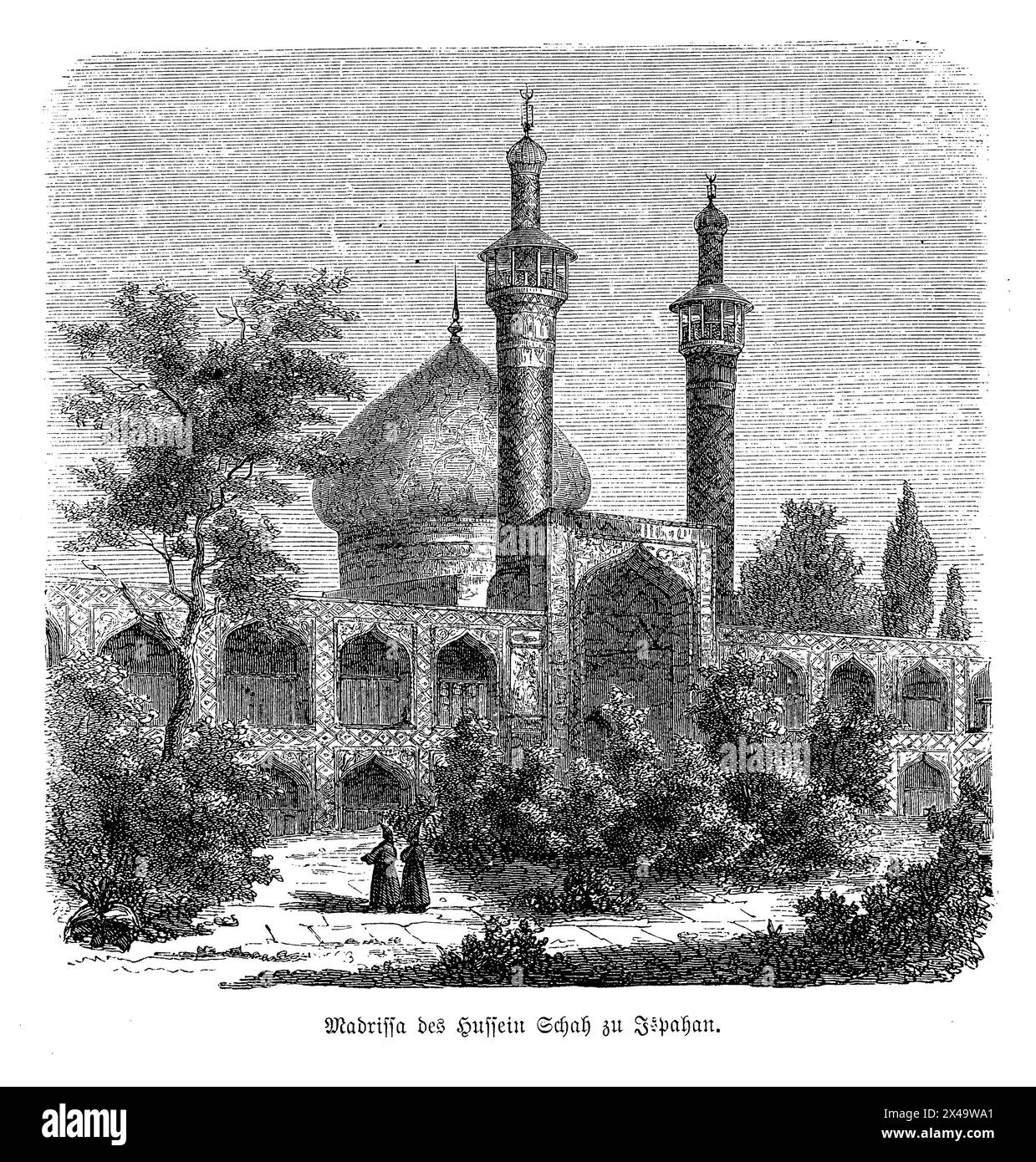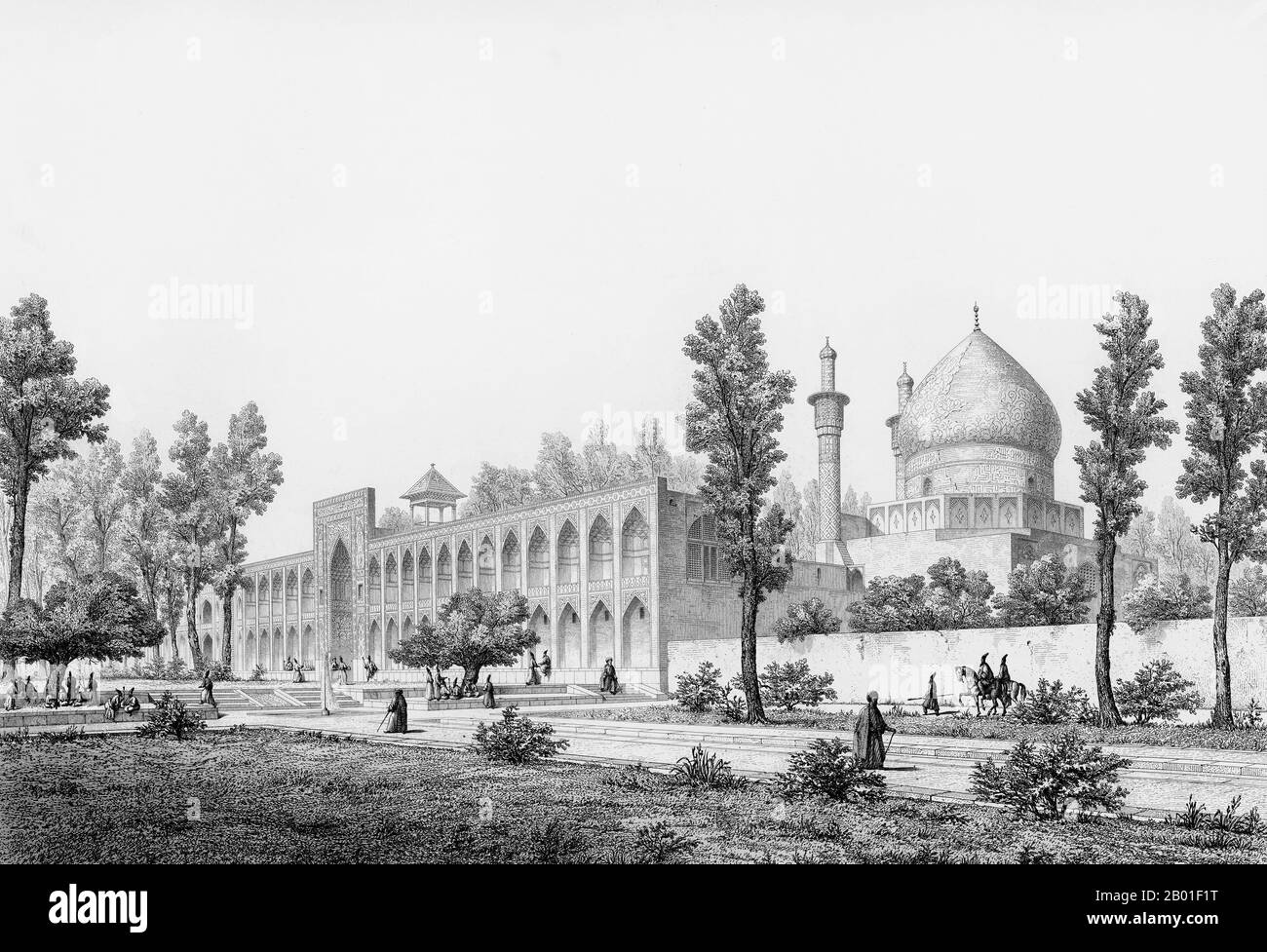Madrasa yi masjid i shah sultan hussein Stock Photos and Images
(3)See madrasa yi masjid i shah sultan hussein stock video clipsQuick filters:
Madrasa yi masjid i shah sultan hussein Stock Photos and Images
 Iran/Persia: Architectural drawing of Madrasa-yi Masjid-i Shah Sultan Hussein, Isfahan, by Pascal Coste (26 November 1787 - 8 February 1879), c. 1845. Xavier Pascal Coste was a French architect. His father was one of the leading joiners in Marseille. Showing intellectual and artistic promise, Pascal began his studies in the studio of Penchaud, architect of the département and the municipalité. In 1814, he was received into the École des Beaux-Arts in Paris. Stock Photohttps://www.alamy.com/image-license-details/?v=1https://www.alamy.com/iranpersia-architectural-drawing-of-madrasa-yi-masjid-i-shah-sultan-hussein-isfahan-by-pascal-coste-26-november-1787-8-february-1879-c-1845-xavier-pascal-coste-was-a-french-architect-his-father-was-one-of-the-leading-joiners-in-marseille-showing-intellectual-and-artistic-promise-pascal-began-his-studies-in-the-studio-of-penchaud-architect-of-the-dpartement-and-the-municipalit-in-1814-he-was-received-into-the-cole-des-beaux-arts-in-paris-image344241126.html
Iran/Persia: Architectural drawing of Madrasa-yi Masjid-i Shah Sultan Hussein, Isfahan, by Pascal Coste (26 November 1787 - 8 February 1879), c. 1845. Xavier Pascal Coste was a French architect. His father was one of the leading joiners in Marseille. Showing intellectual and artistic promise, Pascal began his studies in the studio of Penchaud, architect of the département and the municipalité. In 1814, he was received into the École des Beaux-Arts in Paris. Stock Photohttps://www.alamy.com/image-license-details/?v=1https://www.alamy.com/iranpersia-architectural-drawing-of-madrasa-yi-masjid-i-shah-sultan-hussein-isfahan-by-pascal-coste-26-november-1787-8-february-1879-c-1845-xavier-pascal-coste-was-a-french-architect-his-father-was-one-of-the-leading-joiners-in-marseille-showing-intellectual-and-artistic-promise-pascal-began-his-studies-in-the-studio-of-penchaud-architect-of-the-dpartement-and-the-municipalit-in-1814-he-was-received-into-the-cole-des-beaux-arts-in-paris-image344241126.htmlRM2B01F1X–Iran/Persia: Architectural drawing of Madrasa-yi Masjid-i Shah Sultan Hussein, Isfahan, by Pascal Coste (26 November 1787 - 8 February 1879), c. 1845. Xavier Pascal Coste was a French architect. His father was one of the leading joiners in Marseille. Showing intellectual and artistic promise, Pascal began his studies in the studio of Penchaud, architect of the département and the municipalité. In 1814, he was received into the École des Beaux-Arts in Paris.
 The Madrasa-yi Masjid-i Shah Sultan Hussein located in the historic city of Isfahan, built during the reign of Shah Sultan Hussein in the early 18th century, showcases the sophistication and beauty of Persian architectural design. The structure is known for its intricate tilework featuring floral and geometric motifs, stunning muqarnas (stalactite vaulting), and the harmonious integration of the madrasa with the mosque, both centered around a tranquil courtyard. The facade is adorned with beautiful tiles in shades of blue, turquoise, and white Stock Photohttps://www.alamy.com/image-license-details/?v=1https://www.alamy.com/the-madrasa-yi-masjid-i-shah-sultan-hussein-located-in-the-historic-city-of-isfahan-built-during-the-reign-of-shah-sultan-hussein-in-the-early-18th-century-showcases-the-sophistication-and-beauty-of-persian-architectural-design-the-structure-is-known-for-its-intricate-tilework-featuring-floral-and-geometric-motifs-stunning-muqarnas-stalactite-vaulting-and-the-harmonious-integration-of-the-madrasa-with-the-mosque-both-centered-around-a-tranquil-courtyard-the-facade-is-adorned-with-beautiful-tiles-in-shades-of-blue-turquoise-and-white-image605038953.html
The Madrasa-yi Masjid-i Shah Sultan Hussein located in the historic city of Isfahan, built during the reign of Shah Sultan Hussein in the early 18th century, showcases the sophistication and beauty of Persian architectural design. The structure is known for its intricate tilework featuring floral and geometric motifs, stunning muqarnas (stalactite vaulting), and the harmonious integration of the madrasa with the mosque, both centered around a tranquil courtyard. The facade is adorned with beautiful tiles in shades of blue, turquoise, and white Stock Photohttps://www.alamy.com/image-license-details/?v=1https://www.alamy.com/the-madrasa-yi-masjid-i-shah-sultan-hussein-located-in-the-historic-city-of-isfahan-built-during-the-reign-of-shah-sultan-hussein-in-the-early-18th-century-showcases-the-sophistication-and-beauty-of-persian-architectural-design-the-structure-is-known-for-its-intricate-tilework-featuring-floral-and-geometric-motifs-stunning-muqarnas-stalactite-vaulting-and-the-harmonious-integration-of-the-madrasa-with-the-mosque-both-centered-around-a-tranquil-courtyard-the-facade-is-adorned-with-beautiful-tiles-in-shades-of-blue-turquoise-and-white-image605038953.htmlRM2X49WA1–The Madrasa-yi Masjid-i Shah Sultan Hussein located in the historic city of Isfahan, built during the reign of Shah Sultan Hussein in the early 18th century, showcases the sophistication and beauty of Persian architectural design. The structure is known for its intricate tilework featuring floral and geometric motifs, stunning muqarnas (stalactite vaulting), and the harmonious integration of the madrasa with the mosque, both centered around a tranquil courtyard. The facade is adorned with beautiful tiles in shades of blue, turquoise, and white
 Iran/Persia: Madrasa-yi Masjid-i Shah Sultan Hussein, Isfahan, by Pascal Coste (26 November 1787 - 8 February 1879), c. 1845. Xavier Pascal Coste was a French architect. His father was one of the leading joiners in Marseille. Showing intellectual and artistic promise, Pascal began his studies in the studio of Penchaud, architect of the département and the municipalité. In 1814, he was received into the École des Beaux-Arts in Paris. His time in Paris was a pivotal one in his life - there he met the geographer Edme François Jomard, who put him in touch with the viceroy of Egypt. Stock Photohttps://www.alamy.com/image-license-details/?v=1https://www.alamy.com/iranpersia-madrasa-yi-masjid-i-shah-sultan-hussein-isfahan-by-pascal-coste-26-november-1787-8-february-1879-c-1845-xavier-pascal-coste-was-a-french-architect-his-father-was-one-of-the-leading-joiners-in-marseille-showing-intellectual-and-artistic-promise-pascal-began-his-studies-in-the-studio-of-penchaud-architect-of-the-dpartement-and-the-municipalit-in-1814-he-was-received-into-the-cole-des-beaux-arts-in-paris-his-time-in-paris-was-a-pivotal-one-in-his-life-there-he-met-the-geographer-edme-franois-jomard-who-put-him-in-touch-with-the-viceroy-of-egypt-image344241124.html
Iran/Persia: Madrasa-yi Masjid-i Shah Sultan Hussein, Isfahan, by Pascal Coste (26 November 1787 - 8 February 1879), c. 1845. Xavier Pascal Coste was a French architect. His father was one of the leading joiners in Marseille. Showing intellectual and artistic promise, Pascal began his studies in the studio of Penchaud, architect of the département and the municipalité. In 1814, he was received into the École des Beaux-Arts in Paris. His time in Paris was a pivotal one in his life - there he met the geographer Edme François Jomard, who put him in touch with the viceroy of Egypt. Stock Photohttps://www.alamy.com/image-license-details/?v=1https://www.alamy.com/iranpersia-madrasa-yi-masjid-i-shah-sultan-hussein-isfahan-by-pascal-coste-26-november-1787-8-february-1879-c-1845-xavier-pascal-coste-was-a-french-architect-his-father-was-one-of-the-leading-joiners-in-marseille-showing-intellectual-and-artistic-promise-pascal-began-his-studies-in-the-studio-of-penchaud-architect-of-the-dpartement-and-the-municipalit-in-1814-he-was-received-into-the-cole-des-beaux-arts-in-paris-his-time-in-paris-was-a-pivotal-one-in-his-life-there-he-met-the-geographer-edme-franois-jomard-who-put-him-in-touch-with-the-viceroy-of-egypt-image344241124.htmlRM2B01F1T–Iran/Persia: Madrasa-yi Masjid-i Shah Sultan Hussein, Isfahan, by Pascal Coste (26 November 1787 - 8 February 1879), c. 1845. Xavier Pascal Coste was a French architect. His father was one of the leading joiners in Marseille. Showing intellectual and artistic promise, Pascal began his studies in the studio of Penchaud, architect of the département and the municipalité. In 1814, he was received into the École des Beaux-Arts in Paris. His time in Paris was a pivotal one in his life - there he met the geographer Edme François Jomard, who put him in touch with the viceroy of Egypt.